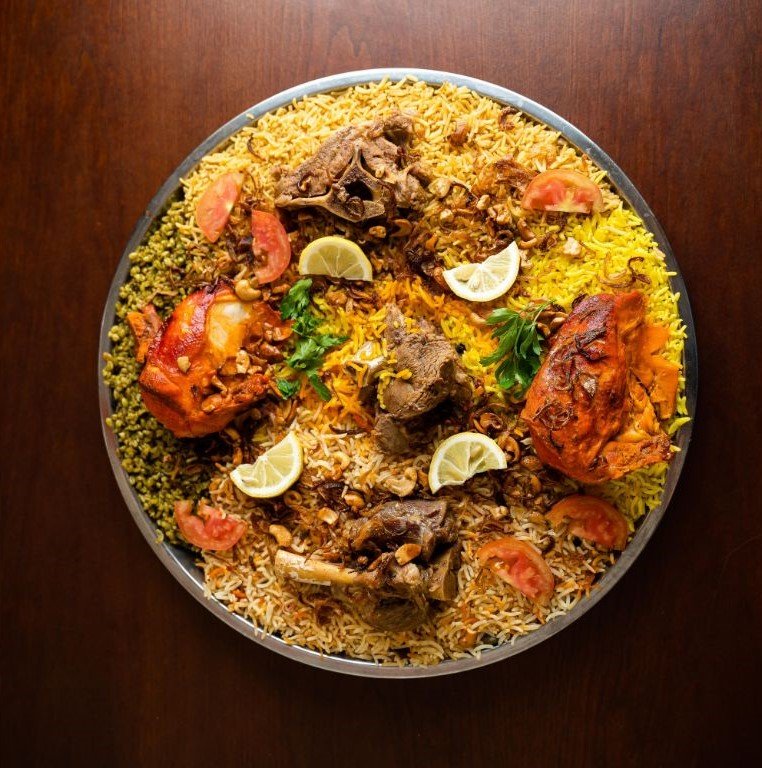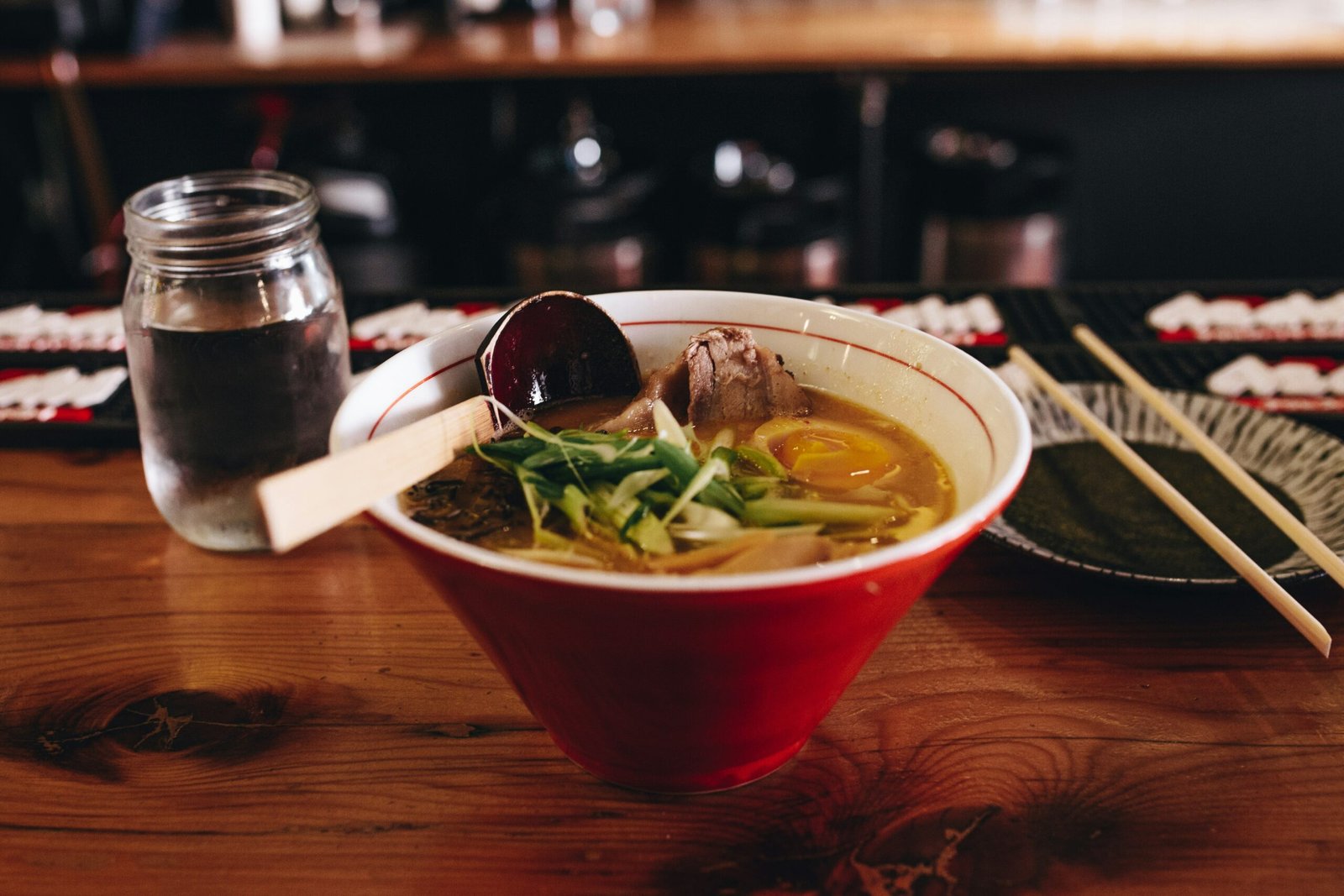What is Jollof Rice?
Jollof rice is a beloved staple of West African cuisine, known for its vibrant flavor and cultural significance. Originating in the Senegambia region, the dish is believed to have been created by the Wolof people, whose name directly inspired the term “Jollof.” Over the centuries, Jollof rice has evolved, incorporating ingredients and cooking techniques from various West African countries, including Nigeria and Ghana. Each nation boasts its unique jollof rice recipe, demonstrating the dish’s ability to adapt and resonate within different cultures.
The main constituents of jollof rice are rice, tomatoes, onions, and a blend of spices, which come together to create a rich, flavorful dish that serves as the cornerstone of many celebrations. Family gatherings, parties, and traditional festivals often feature jollof rice, showcasing its role in communal dining and social bonds. This dish is more than just a meal; it symbolizes unity and brings people together, making it a true representation of West African hospitality.
The debate over which country’s jollof rice is the best adds to the dish’s allure. Nigerian jollof rice is typically characterized by its smoky flavor, while Ghanaian jollof rice is known for its sweeter and more complex taste. Ingredients such as bell peppers, curry powder, or even bay leaves may vary according to local preferences, further diversifying jollof rice recipes across the region. Regardless of the variations, what remains constant is the love and pride that families have in preparing and sharing this dish, marking significant moments that define their heritage.
The Ingredients: What Makes Jollof Rice Unique

Jollof rice is a celebrated dish in West African cuisine, known for its vibrant color and rich flavors. At the core of the best Jollof rice recipe are a selection of essential ingredients that harmonize to create its distinctive taste. The choice of rice is critical; long-grain parboiled rice is preferred for its ability to absorb flavors while maintaining a fluffy texture. In some regions, jasmine rice is also a popular substitute, offering a delicate aroma that complements the dish.
Tomatoes are a foundational ingredient in Jollof rice, contributing not only to the dish’s signature red hue but also to its rich, umami flavor. Fresh tomatoes can be blended into a smooth base or diced to add texture, while canned tomatoes are often used for convenience, especially when one seeks to make jollof rice fast. Onions, another vital component, are sautéed to release their sweetness before being combined with the tomato base. Together, these ingredients form a flavorful stew that infuses the rice.
Spices play a crucial role in elevating the flavors of Jollof rice, with ingredients such as thyme, bay leaves, and pepper creating the characteristic warmth and depth. The spice mix can vary from one region to another, allowing each culture to put its unique spin on the Jollof rice recipe. For a richer flavor profile, many cooks also add ingredients like ginger and garlic, which further enhance the overall taste.
To round out the dish, Jollof rice is often accompanied by proteins such as chicken, fish, or beef, along with veggies like bell peppers and carrots, which not only add color but also provide additional nutritional value. This combination of ingredients not only makes Jollof rice delightful but also showcases the adaptability of the recipe across different West African cultures.
Cooking Methods: Traditional vs Modern Approaches to Jollof Rice

Jollof rice is a beloved dish in West African cuisine, and its cooking methods can greatly influence the end result. Traditionally, Jollof rice is cooked over an open flame or on a stovetop. This approach allows for the development of that unique smoky flavor, which is often considered a hallmark of the best Jollof rice. The traditional method involves sautéing tomatoes, onions, and peppers before adding the rice and letting it steam, which can take time and careful attention to prevent burning.
Modern techniques have provided several alternatives for how to make Jollof rice fast and efficiently. One popular method is oven-baking, where the ingredients are combined in a baking dish and cooked at a controlled temperature. This method can save time and effort, as it requires less active monitoring than stovetop cooking. However, the smoky flavor may be less pronounced unless specific steps, such as using a broiler, are adopted to replicate that effect.
Another modern option is using a rice cooker, which provides a simple and foolproof way of preparing Jollof rice. A rice cooker helps to achieve a consistent texture, but achieving the signature smoky taste can be more challenging. It is essential to ensure that the tomatoes are well-cooked and flavors are well-merged before adding rice to the cooker. Regardless of the method, common mistakes such as underestimating the amount of liquid required or not seasoning the dish properly can lead to subpar results.
Each cooking method has its own advantages and limitations. Weighing these against personal preferences and time constraints will help in deciding the best approach for preparing a delicious Jollof rice recipe. Developing this beloved dish can be a rewarding culinary experience, regardless of which method is chosen.
Serving and Pairing: Elevating Your Jollof Rice Experience
Serving Jollof rice is an art that can greatly enhance the dining experience. This traditional West African dish is renowned for its rich flavors and vibrant color, making it a centerpiece at any meal. When considering how to serve Jollof rice, presentation plays a crucial role. A colorful plate garnished with fresh herbs or sliced peppers can attractively showcase the dish. Additionally, incorporating vibrant sidedishes adds to the visual appeal. Serving your Jollof rice in a large, stylish bowl encourages communal sharing, a central aspect of West African dining culture.
Pairing Jollof rice effectively elevates the overall taste experience. Traditionally, Jollof rice is often accompanied by fried plantains, which provide a sweet contrast to the spicy and savory flavors of the rice. Proteins such as grilled chicken, beef, or fish are commonly served alongside, their rich flavors complementing the Jollof rice perfectly. A simple salad of mixed greens or coleslaw can also provide a refreshing balance to the meal, helping to cut through the richness often found in this dish. For those curious about how to make Jollof rice fast while still enjoying these traditional accompaniments, meal planning is essential.
In recent years, Jollof rice has gained international recognition, inspiring a variety of fusion dishes that incorporate global flavors. Chefs around the world have found innovative ways to reinterpret this classic dish, such as Jollof rice sushi rolls or Jollof rice bowls topped with Asian-inspired sauces. These modern twists on the best Jollof rice not only highlight its versatility but also showcase how traditional dishes can adapt to new culinary contexts while still honoring their roots. Embracing these global influences allows one to appreciate Jollof rice in an entirely new light.


